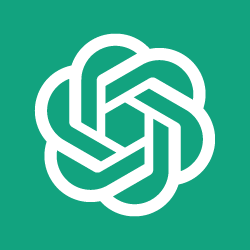Intro
ChatGPT, a language model developed by OpenAI, has revolutionized the way we think about programming and software development. With its advanced natural language processing capabilities, ChatGPT has the potential to significantly improve the efficiency and accuracy of programming tasks.
One of the most exciting applications of ChatGPT in programming is its ability to assist developers with code generation. By analyzing code samples and understanding the developer’s intent, ChatGPT can generate new code that is both syntactically and semantically correct. This can save developers a significant amount of time and effort, and can also lead to fewer bugs and errors in the final product.
ChatGPT can also be used to improve code refactoring and debugging. By analyzing code and understanding its structure and intent, ChatGPT can suggest improvements and optimizations, and even help identify and fix bugs.
Another exciting application of ChatGPT in programming is its ability to assist with documentation and comments. By analyzing code and understanding its structure and intent, ChatGPT can generate accurate and informative documentation and comments, making the code easier to understand and maintain.
But ChatGPT is not just for developers, it can also be used to improve the efficiency of other programming-related tasks such as testing, project management, and even sales. For example, ChatGPT can be used to generate test cases, create project plans and estimate project timelines, and even assist with pre-sales activities such as creating software requirements and proposals.
ChatGPT is an extremely powerful tool that has the potential to change the way we think about programming and software development. With its advanced natural language processing capabilities, it can significantly improve the efficiency and accuracy of programming tasks, making the development process faster, more accurate, and more efficient.
It’s worth noting that ChatGPT is not a replacement for human developers, but rather a tool that can assist them in their work. The best results will be achieved by using ChatGPT in conjunction with human oversight and expertise.
As the technology continues to evolve, we can expect to see even more exciting applications of ChatGPT in programming and software development. It’s an exciting time to be a developer and we can’t wait to see what the future holds for ChatGPT and AI-assisted development.
There are several ways to monetize ChatGPT in software development
Developing and selling conversational AI products: ChatGPT can be used to develop conversational AI applications such as chatbots, virtual assistants, and voice assistants. These applications can be sold to businesses and individuals for use in customer service, e-commerce, and other industries.
Offering consulting services: Companies and individuals can use their expertise in ChatGPT to offer consulting services to other businesses looking to implement conversational AI in their operations. This can include training and customization services.
Creating and selling training materials: Companies and individuals can create and sell training materials such as tutorials, courses, and e-books to teach others how to use ChatGPT in software development.
Developing and selling language models: You can fine-tune ChatGPT to a specific domain or industry, and sell the resulting language model to other developers or companies.
Building and monetizing chatbot services: You can use ChatGPT to build chatbots that can be used to automate customer service, e-commerce, or other business processes. You can then charge businesses a monthly or annual fee to access the chatbot.
Developing and selling automation tools: ChatGPT can be used to automate repetitive tasks such as language translation, text summarization, and contract creation. Developers can build tools that leverage ChatGPT’s capabilities, and then sell them to other developers or businesses.
It is worth noting that, while ChatGPT is a powerful tool, it is important to consider ethical and security implications of its usage. It is important to use these technologies in conjunction with human oversight and expertise to ensure the best results.
How ChatGPT can be used in Web3 Development
ChatGPT can be used in web3 development in several ways. One of the main benefits of using ChatGPT in dApp development is that it can provide a more natural and user-friendly interface. For example, ChatGPT can be used to create chatbots that interact with users in a conversational manner. These chatbots can help users navigate the dApp and perform tasks such as account creation and asset management.
Another use case of ChatGPT in web3 development is to automate the process of creating smart contracts. ChatGPT can be trained to understand natural language instructions for creating and deploying smart contracts. This can help to reduce the time and resources required for dApp development, as well as make it more accessible to non-technical users.
In addition, ChatGPT can be used to improve the security of dApps by automatically detecting and flagging suspicious activity. For example, ChatGPT can be trained to detect and flag phishing attempts or other malicious activity.
Conclusion
ChatGPT is a powerful tool that can be used to enhance the user experience and improve the efficiency of web3 development. Its ability to understand natural language and generate human-like text can be used to create more user-friendly dApps, automate the process of creating smart contracts, and improve the security of dApps. As the web3 development ecosystem continues to evolve, it is likely that we will see more and more applications of ChatGPT in this field.
It is worth mentioning that, while GPT-3 and ChatGPT are powerful tools, they are not a substitute for human oversight and expertise. It is important to use these technologies in conjunction with human expertise to ensure the best results and to consider the ethical and security implications.
